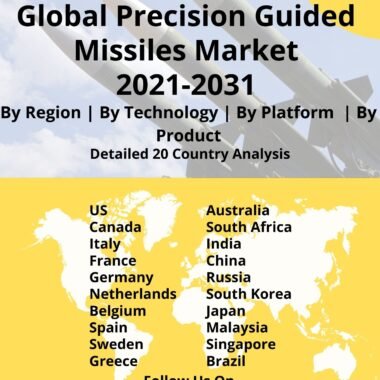Description
Defense Heads Up Display Market
Frequently Asked Questions of Defense HUD Market
Aircraft instrumentation began with dial gauges that displayed all of the required information for flight to the pilot; these dials were all located on the instrument panel, requiring the pilot to look down into the cockpit to see. Military aircraft began using optical reflector gun sights, which were projected on a glass pane placed in the pilot’s forward view to make aiming easier. In 1958, the British Royal Navy created a new sort of gun sight for the Blackburn Buccaneer attack aircraft since the Buccaneer was designed to fly at very low level at great speed while delivering its bombs.
The time between identifying the target and releasing it was only seconds, leaving no time for the pilot to look down into a bomb site or at his instruments. This resulted in the development of the strike sight, which combined the previously established bomb and aiming reticule x’ with altitude and airspeed readouts in a single display projected onto a combiner glass. The reflex sight evolved into the gyro gun sight, which calculated bullet drop automatically by changing the aim point to account for aircraft motion.
The Royal Navy noticed that after the introduction of the HUD, Buccaneer pilots got better at controlling their aircraft because they could keep their perspective of the outside world while having all the critical information in front of them without having to look down into the cockpit. At this point, the Royal Navy opted to increase the information displayed on the HUD to make it more useful for general piloting rather than only weapon pointing. The French invented the first sophisticated airplane HUD in the 1960s. They introduced a standardized HUD symbol system to ease the transition between aircraft types, as well as centralizing all critical flight data in the parts field of view. Since the introduction of the HUD, the cockpit instrument panel has been freed up to display secondary and backup information that is less time critical.
In military combat aircraft, the HUD displays air speed, attitude direction via compass angle of attack acceleration flight path vector and other navigation data. It also displays gun aiming information, missile cueing and target designator box, direction and range. To reduce the quantity of information displayed on the HUD to a fair level and avoid oversaturation, it was divided into modes that display the most relevant readouts for each. These modes include takeoff and landing navigation. Air-to-air and air-to-ground communications
Major factors driving Defense Heads Up Display Market Growth
A typical HUD is combined with both enhanced and synthetic vision elements in synthetic and enhanced vision. Enhanced vision systems use data from multiple sensors on the aircraft to deliver extra information to pilots in low-visibility situations. The employment of algorithms to generate 3D visuals to provide a more intuitive visualization of the pilot’s environment is referred to as synthetic vision. Sensor fusion for enhanced vision will be one of the key Heads up Display market trend that drives the growth of the market.
Trends influencing the Defense Heads Up Display Market Size
HUDs will remain clear screens located in front of the windshield or displays within military pilot helmets. Holographic optics and AR HUDs are still a few years away. Currently, the design of large field-of-view head-up displays market size, which are increasingly required for augmented reality applications, is constrained by the optical components’ inherently large size. Large field of view displays will be the key market trend that influences the heads up display market growth.
Heads Up Display Market Forecast & Dynamics
Increasing defense spending will drive the Heads up Display market forecast for new procurement activities and upgrades to existing platforms with newer technologies and capabilities. The increase in defense spending will encourage procurement of new aircrafts and other platforms that utilize HUDs. Procurement will also be driven by prevailing geo political conditions in Europe and the Asia Pacific.
Defense Heads Up Display Market Analysis for Recent Developments
As per Heads up Display market analysis, BAE Systems has announced the release of a new lightweight, compact Head-Up Display (HUD) for commercial and military aircraft. LiteWave is a laptop-sized HUD that is positioned above the pilot’s head and displays essential information such as direction, altitude, and speed immediately in front of their eyes. LiteWave can be installed in aircraft with even the most limited cockpit area because it is 70% smaller and lighter than a typical HUD. It’s also up to 80% faster to install, and its straightforward design makes maintenance easier and less expensive. LiteWave, which is powered by BAE Systems’ unique, patented waveguide technology, can be easily changed to suit any particular flying position and helps the pilot to maintain outstanding situational awareness even in bad weather or at night.
The first Tejas Mk2 prototype was expected to “roll out” in August 2022, however that deadline has been pushed back to the end of 2022. It is expected to take off for the first time in late 2023. Four prototypes are planned at first. The Tejas Mk2, billed as a 4.5-generation fighter aircraft, will be classified as middleweight rather than lightweight. Hindustan Aeronautics manufactures this single-engine, multi-role supersonic combat plane (HAL). A touch-sensitive wide area display and a wide-angle holographic head-up display system market growth that can be employed with night vision goggles will dominate the glass cockpit.
The Market is at the forefront of technological innovation, transforming the way military personnel access and interpret critical information on the battlefield. HUD technology, seamlessly integrating vital data into the user’s field of view, enhances situational awareness, reduces reaction times, and improves overall mission effectiveness. As modern warfare becomes more complex, the demand for advanced HUD systems has surged, with a focus on providing military personnel with real-time, mission-critical information without diverting their attention from the operational environment. The market is witnessing a paradigm shift towards augmented reality and advanced sensor integration, enabling HUDs to display not only traditional flight data but also intelligence, surveillance, and reconnaissance (ISR) information. Enhanced connectivity and data fusion capabilities further contribute to the versatility of these systems, allowing for a more comprehensive understanding of the battlespace.
Collaborations between defense contractors, technology firms, and research institutions are driving innovation in HUD technology. As military forces prioritize network-centric warfare and information dominance, the Global Defense HUD Market in 2023 reflects a commitment to providing warfighters with cutting-edge solutions that optimize decision-making and operational effectiveness in diverse and dynamic military scenarios.
Key Companies







